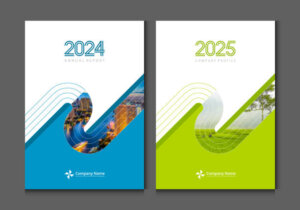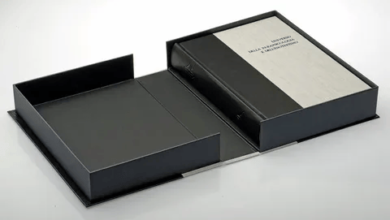When it comes to corporate communication, few tools are as powerful as a well-crafted annual report design. Far more than a compliance document, an annual report offers an opportunity to showcase achievements, inspire stakeholders, and build brand trust. In today’s visually driven world, businesses must think beyond basic formatting and embrace design as a key storytelling tool. Whether you’re a startup looking to attract investors or a large corporation aiming to communicate with shareholders and the public, your annual report should leave a lasting impression.
Let’s explore how impactful design can transform your report from a mandatory obligation into a meaningful representation of your brand’s purpose and progress.

1. Why Annual Report Design Matters
Annual reports serve many functions: they inform investors, celebrate milestones, analyze performance, and outline future goals. But how this information is presented can drastically affect its reception. A visually engaging report draws readers in, guides them through complex data, and reinforces brand identity.
Research shows that people retain 65% of visual content compared to just 10% of written content after three days. That’s why smart annual report design is about more than aesthetics—it’s about clear communication. The right layout, typography, charts, and infographics bring data to life and make it more digestible for a broad audience.
2. Elements of Effective Annual Report Design
To ensure that your annual report hits the mark, it must be both functional and visually compelling. Here are key components to consider:
a. Visual Hierarchy
Use size, spacing, and typography to highlight key figures, messages, and transitions between sections. Hierarchy ensures readers can scan and navigate with ease.
b. Brand Consistency
The report should reflect your brand’s tone, color palette, fonts, and values. Whether it’s minimalistic or dynamic, consistency fosters familiarity and professionalism.
c. Imagery and Infographics
Photos of your team, charts of your growth, and infographics explaining your impact—these elements personalize your story and connect data to emotion.
d. Typography and Layout
Balance whitespace with content-rich pages. Use font pairings that are easy to read while adding subtle style. Avoid clutter, and guide the eye naturally through your pages.
3. Digital vs. Print Reports: Designing for Both
Today, most organizations share their annual reports online, either as PDFs or interactive web pages. Digital formats allow for animation, video, and hyperlinks—making engagement metrics easier to track.
However, some stakeholders still value printed versions. Your annual report design should be flexible enough to translate seamlessly across formats. This might mean creating a primary digital version with clickable navigation, then adjusting it for a printable format with cleaner structure and higher-resolution graphics.
4. Telling a Story Through Design
Storytelling is central to all great communication. Annual reports shouldn’t just list stats and financials—they should take the reader on a journey. A compelling report:
-
Begins with a strong message from leadership (CEO or Chair)
-
Highlights achievements and challenges
-
Explains impact in human terms
-
Aligns future vision with core mission and values
Design brings this story to life. Think pull quotes, powerful headers, data visualizations, timelines, and case studies—all placed strategically to support the narrative flow.
5. Accessibility and Compliance
Don’t overlook accessibility. Reports should be usable by people with disabilities, meeting Web Content Accessibility Guidelines (WCAG). This includes:
-
Alt-text for images
-
Adequate color contrast
-
Screen-reader-friendly text structure
-
Logical navigation
Not only does this reflect well on your brand—it may be a legal requirement depending on your industry and region.
6. Sustainability and Ethical Design
As sustainability grows in importance, consider how your design choices reflect your environmental and social values. If you print, use recycled paper and eco-friendly inks. Digitally, ensure fast load times and minimal data usage, especially for remote communities.
The tone of your design—authentic, inclusive, and transparent—can reinforce ethical values that stakeholders care about.
7. Choosing the Right Design Partner
Not every business has the in-house capability to design annual reports effectively. That’s where a professional design agency comes in. An experienced team ensures your report is:
-
Visually polished and on-brand
-
Strategically structured for storytelling
-
Compliant with accessibility and regulatory standards
-
Delivered on time with room for revisions
Look for a partner that understands both the creative and technical sides of report production.
Conclusion: Bring Your Vision to Life with Pepperit
At the heart of every effective annual report design is a deep understanding of communication, storytelling, and visual strategy. When done right, it builds credibility, boosts engagement, and strengthens brand loyalty.
At pepperit, we specialize in designing impactful, beautiful, and purposeful annual reports that resonate. Whether you’re starting from scratch or revamping an existing format, our team is ready to help you bring your story to life with clarity and creativity.
visit: theglobalnewz




